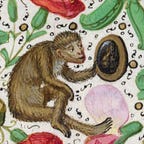5 Incredible Nudes from the Art World
Controversial photography, painting, Japanese erotica prints, and more
Born we are, naked. With time though — now in a historical “human” context — we started covering ourselves for warmth, for status, for everyday life. This state of always being dressed rendered the naked body the most vulnerable and “essential” state for us, but much like clothing, the naked body imprisons and reveals meanings. Especially in the arts.
Controversy is now often a word associated with nudity, even in the arts, but it wasn’t always the case.
As Carré D’artistes’ blog teaches us, ancient cultures assigned various meanings to male and female nude statues. As shown in Egyptian, Mesopotamian, and Greek art, naked women were emblems of happiness, reproduction, and fertility. Naked female goddesses who signify fertility or love are shown in very early prehistoric artworks. In Mesopotamian mythology, Ishtar, the nude goddess of love and battle, is an excellent example.
Unlike naked female sculptures, which are connected with childbearing, naked male sculptures are associated with strong moral ideals and strength. Men competed in naked competitions for sporting events in Ancient Greece. They also got naked at symposia (large parties involving drinking, music, dancing, discourse, and…
